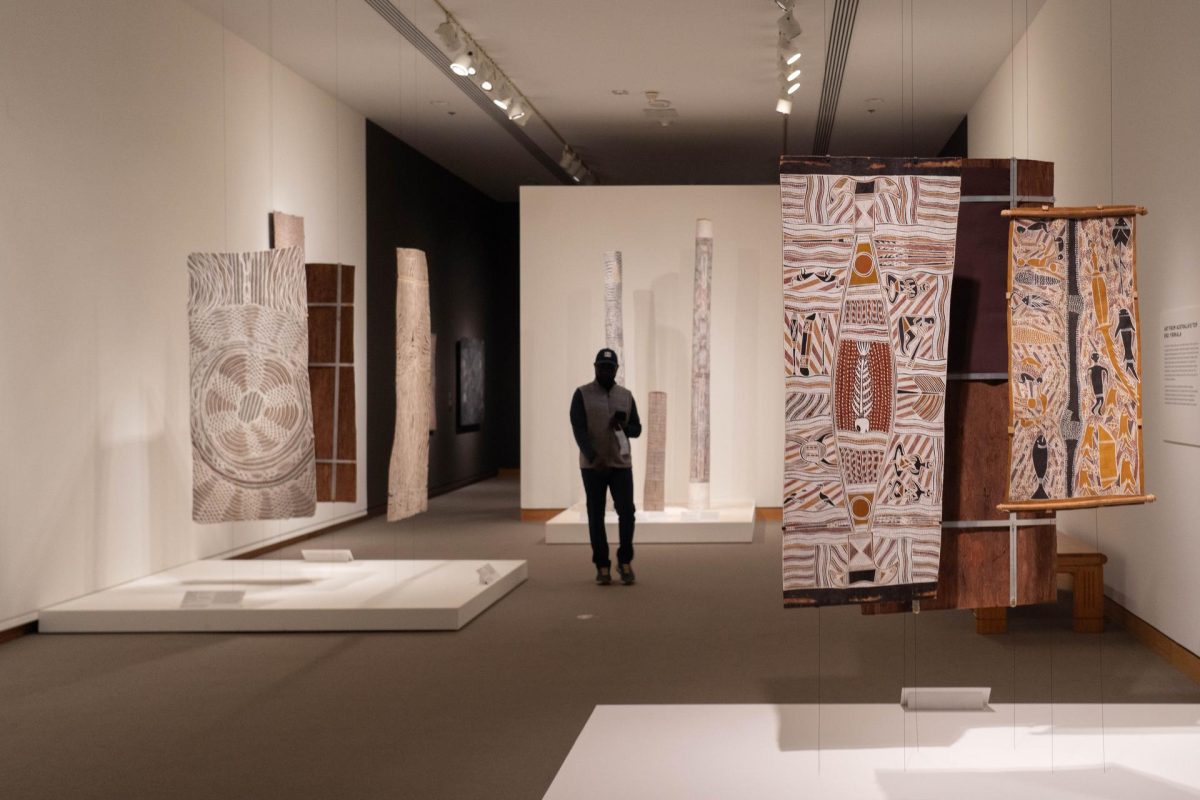Step Into the Whirlpool of Yirrkala at SAM
Is paradise lost? Or is there a place on Earth that has been able to avoid climate catastrophes, species loss, homelessness, and menial jobs, and that constantly involves everyone in making art and ceremony? There is. For visions of a culture that has cared for the environment and every living species in it for millennia, and now creates art which invites us to consider alternative ways of navigating life on this planet, let’s turn to Yirrkala.
Yirrkala is a small town on the northeast edge of Australia, which is a central hub for the people who call themselves Yolngu and live on territories from the waters off the Blue Mud Bay in Arnhem Land. Their art gives form to a database of relationships and laws that govern the way humans interact with one another and with natural phenomena. Their signature is seen in intricate designs that arrived with the great culture heroes whose bodies were marked by patterns of water, salt, and foam that dried on their skin. For centuries, Yolngu have painted clan designs on bodies for ceremonies and on sacred objects.


More recently, Yolngu artists have painted on bark, incised metal, and developed media to provide outsiders with hints of how they see their world. Thirty examples of art from Yirrkala were selected from the nearly 100 in the collection formulated during visits to the Top End by Bob Kaplan and Margaret Levi. A cultural keynote of Yolngu culture is the law of sharing and not excluding any people or anything from the group. Kinship extends to all living beings they come in contact with: from birds and insects to snakes and crocodiles. Then there are the ancestral beings who may make their presence known in sparkling water, blazing fire, or the angry eyes of a shark.
Will Stubbs, a Yirrkala resident, has described a difference in what Yolngu art reflects upon. As he has written, “If you think of a time before television, when entertainment was not beamed from remote sources, you would have been grateful for a fully functioning ecosystem… In a fully enriched ecosystem, you cannot separate yourself from the environment: fish will literally fly past your face, snakes slither into your house, and insects crawl into your bed.”1 A visit to this gallery will surround you with messages from Yolngu who offer a long, sustained look at their territory and want us to know how extraordinary it is.
Yirrkala: Art From Australia’s Top End is now on view in SAM’s third floor galleries.
– Pam McClusky, SAM Oliver E. and Pamela F. Cobb Curator of African and Oceanic Art
This article first appeared in the February through May 2024 edition of SAM Magazine and has been edited for our online readers. Become a SAM member today to receive our quarterly magazine delivered directly to your mailbox and other exclusive member perks!
Photos: Chloe Collyer.
1 Will Stubs, Larrakitj: Kerry Stokes Collection (Australia: Fremantle Press, 2011), 40.
